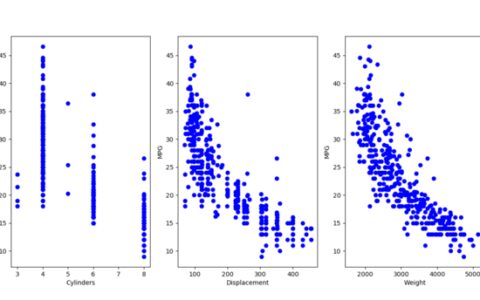在 TensorFlow 中,可以使用 tf.config 模块来限制显存大小。可以使用以下代码来实现:
import tensorflow as tf
# 限制显存大小
gpus = tf.config.experimental.list_physical_devices('GPU')
if gpus:
try:
# 设置显存大小为 2GB
tf.config.experimental.set_virtual_device_configuration(
gpus[0],
[tf.config.experimental.VirtualDeviceConfiguration(memory_limit=2048)])
except RuntimeError as e:
print(e)
在这个示例中,我们首先使用 tf.config.experimental.list_physical_devices() 函数来获取可用的 GPU 设备。然后,我们使用 tf.config.experimental.set_virtual_device_configuration() 函数来设置显存大小。在这个例子中,我们将显存大小设置为 2GB。
示例1:使用 TensorFlow 训练模型
在完成上述步骤后,可以将数据用 TensorFlow 训练模型。可以使用以下代码来训练模型:
import tensorflow as tf
# 限制显存大小
gpus = tf.config.experimental.list_physical_devices('GPU')
if gpus:
try:
# 设置显存大小为 2GB
tf.config.experimental.set_virtual_device_configuration(
gpus[0],
[tf.config.experimental.VirtualDeviceConfiguration(memory_limit=2048)])
except RuntimeError as e:
print(e)
# 定义模型
model = tf.keras.Sequential([
tf.keras.layers.Dense(64, activation='relu', input_shape=(784,)),
tf.keras.layers.Dense(10, activation='softmax')
])
# 编译模型
model.compile(optimizer='adam',
loss='sparse_categorical_crossentropy',
metrics=['accuracy'])
# 加载数据
mnist = tf.keras.datasets.mnist
(x_train, y_train), (x_test, y_test) = mnist.load_data()
x_train, x_test = x_train / 255.0, x_test / 255.0
# 训练模型
model.fit(x_train, y_train, epochs=5, validation_data=(x_test, y_test))
在这个示例中,我们首先使用 tf.config.experimental.list_physical_devices() 函数来获取可用的 GPU 设备。然后,我们使用 tf.config.experimental.set_virtual_device_configuration() 函数来设置显存大小。在这个例子中,我们将显存大小设置为 2GB。
接下来,我们定义了一个简单的全连接神经网络模型,并使用 model.compile() 函数来编译模型。然后,我们使用 mnist.load_data() 函数来加载 MNIST 数据集,并将数据归一化。最后,我们使用 model.fit() 函数来训练模型。
示例2:使用 TensorFlow 进行推理
在完成上述步骤后,可以使用 TensorFlow 进行推理。可以使用以下代码来进行推理:
import tensorflow as tf
# 限制显存大小
gpus = tf.config.experimental.list_physical_devices('GPU')
if gpus:
try:
# 设置显存大小为 2GB
tf.config.experimental.set_virtual_device_configuration(
gpus[0],
[tf.config.experimental.VirtualDeviceConfiguration(memory_limit=2048)])
except RuntimeError as e:
print(e)
# 加载模型
model = tf.keras.models.load_model('my_model.h5')
# 加载数据
(x_train, y_train), (x_test, y_test) = tf.keras.datasets.mnist.load_data()
x_test = x_test / 255.0
# 进行推理
predictions = model.predict(x_test[:10])
print(predictions)
在这个示例中,我们首先使用 tf.config.experimental.list_physical_devices() 函数来获取可用的 GPU 设备。然后,我们使用 tf.config.experimental.set_virtual_device_configuration() 函数来设置显存大小。在这个例子中,我们将显存大小设置为 2GB。
接下来,我们使用 tf.keras.models.load_model() 函数来加载之前训练好的模型。然后,我们使用 mnist.load_data() 函数来加载 MNIST 数据集,并将数据归一化。最后,我们使用 model.predict() 函数来进行推理,并将前 10 个样本的预测结果打印出来。
本站文章如无特殊说明,均为本站原创,如若转载,请注明出处:tensorflow 限制显存大小的实现 - Python技术站

 微信扫一扫
微信扫一扫  支付宝扫一扫
支付宝扫一扫 


